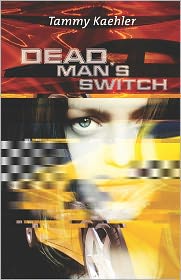Kathleen Ann Goonan's first novel,
Queen City Jazz (the start of her Nanotech Quartet), was a
New York Times Notable book.
The Bones of Time, her acclaimed second novel, was a finalist for the Arthur C. Clarke Award in 2000.
Crescent City Rhapsody (third in the Quartet) was a Nebula nominee,

and
Light Music, also a Nebula finalist, was described by
Booklist as the "brilliant conclusion to a tetralogy as consequential in sf as Kim Stanley Robinson's Mars trilogy."
Goonan won the John W. Campbell Award for her novel
In War Times.
She applied
the Page 69 Test to her new novel,
This Shared Dream, and reported the following:
Page 69 of This Shared Dream:
She made herself take a breath. “Please don’t come down here unless I’m outside. I already told you.”
He turned his blond-tufted head and stared at her, but didn’t say anything. He turned his attention back to pebble-plucking. Then he stood, hoisted a big rock with both hands and smashed it down hard so that it splashed them both.
“Come on, then, we have to get dressed.”
He said, “I’m looking for a pink rock.”
She grabbed him around the waist, hoisted him onto her hip, and strode toward the house. “I have to go to work, and you have to go to school and then spend three days with Daddy.”
“No!” He flailed his arms and kicked. “That Lavender Lady hugs me and squishes me and her perfume makes me sneeze.”
Jill set him down on the steps. “Her name is Tracy, honey. I don’t think she should lock you out of Daddy’s room. I’ll talk to Daddy about it tonight, okay? But he might not change his mind. If you’re afraid at night, you call me on the phone. There’s not anything to be afraid of there.”
“There might be ghosts there too,” he said darkly. “Bad ghosts.”
“Get moving! The van will be here in five minutes.”
BETTE
May 7
In her little garret at the very top of Halcyon House, Bette opened her eyes and stretched. God, but she was stiff!
She sat up in her nest of sheet and blanket and looked out the small window right next to her.
It really was a lovely view. Thirty-five feet below was the roof of the grotto Sam had built for them, and the rushing creek. She was at treetop-level, and the oak leaves fluttering in the crisp morning breeze partially veiled the window, which was good. In the woods beyond the yard, spring-green treetops glittered, catching the early sunlight. Her grandson, wearing a long white t-shirt, thumped down the dewy back stairs and ran down the broad stone stairway to the creek.
Kneeling, he reached into the water, and stood, examining something in his hand. Dropping it, he commenced picking up stones and tossing them into the water.
Bette heard Jill, several floors down and therefore very faint, yelling “Stephen!”—her voice distant and irritated. Is that how I used to sound? Bette wondered.
Page 69 of This Shared Dream turns out to be a multi-generational snapshot sharing one focal character, a five-year-old boy who has chosen to call himself Whens, and two viewpoint characters--his mother, Jill, and his grandmother, Bette.
This novel is an exploration of the multiply-wrapped emotional object we call memory, and about time as it unfolds and casts new perspective on the past. Understanding that past is the first step toward making better choices, but there are as many pasts as there are individuals—hence, the title. Throughout the novel, I try to grab hold of the shimmering threads that splay out from each myth a family claims as truth and show how ephemeral, and yet how powerful and affective, such gestalts can be.
On page 69, Whens, his mother Jill, and his grandmother Bette have moved into the long-abandoned family home in downtown Washington, D.C, an overgrown mansion that neighborhood children believe is haunted.
When Jill wakes, Whens is not in his room, and her initial irritation at the possibility of being late to work gives way to panic. At the top of page 69, Jill has just found Whens outside, throwing rocks in a stream. Jill is angry, relieved, and too much in a hurry to deal with his anger at his changing emotional landscape, which is how most of us end up dealing with our own lives.
Mid-page, we see the same scene from the POV of Bette, Jill’s mother, who is much like a ghost in the house of her daughter. Jill does not know that her mother is there, but Bette does reveal herself to Whens soon after this scene.
Although all of us do exist in the current of family and the past, it is always surprising when they suddenly pick up energy and turn the placid, sunny excursion we thought we’d paid for into the kind of storm that sinks ships and dashes us on the rocks.
So I find that the page 69 test works quite well for this book—it is a microcosm of the energies that unfold and move the Dance family through uncharted waters of memory, time, and love.
Learn more about the author and her work at
Kathleen Ann Goonan's website.
The Page 99 Test: In War Times.
Visit
the complete list of books in the Page 69 Test Series.
--Marshal Zeringue
 the Edgar ®, the Anthony, the Agatha, the Shamus, the Nero Wolfe, Gumshoe and Barry awards. She also has been nominated for other prizes in the crime fiction field, including the Hammett and the Macavity.
the Edgar ®, the Anthony, the Agatha, the Shamus, the Nero Wolfe, Gumshoe and Barry awards. She also has been nominated for other prizes in the crime fiction field, including the Hammett and the Macavity.





















